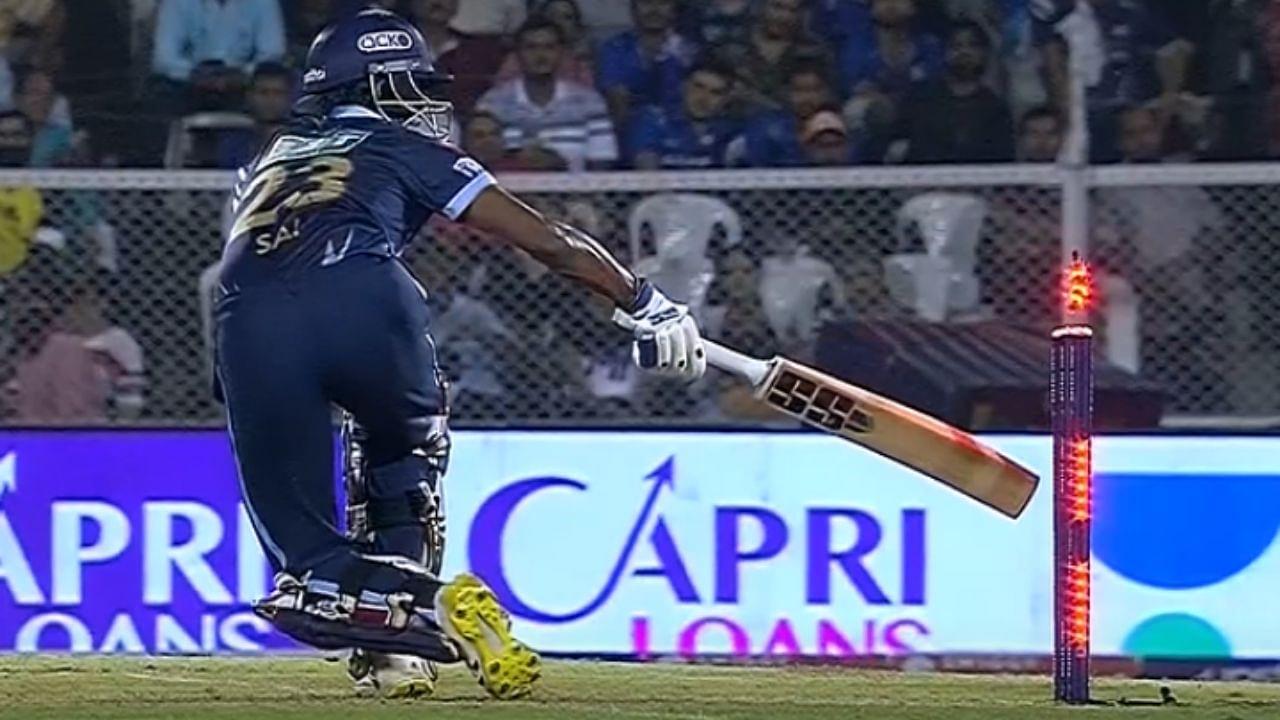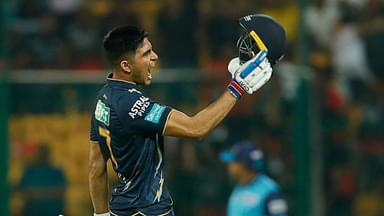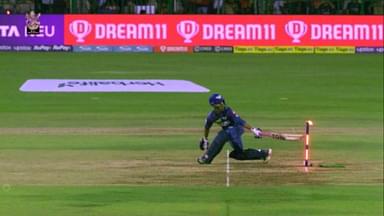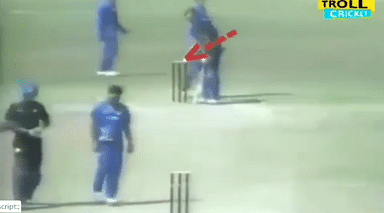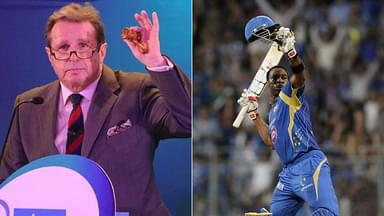Hit wicket in cricket meaning: The Gujarat Titans batter Sai Sudharsan was victim to one of the most cruel mode of dismissal in the game.
Advertisement
During the 51st match of the ongoing 15th season of the Indian Premier League at the Brabourne Stadium in Mumbai, Gujarat Titans (GT) Southpaw batter Sai Sudharsan had to head back towards the pavilion courtesy of him getting Out Hit Wicket against the Mumbai Indians (MI).
It all happened on the last delivery of the 16th Over being bowled by Kieron Pollard, while GT were en route to the target of 178 runs handed by the MI.
Known for taking the pace off his deliveries via the off-cutters, Pollard, while bowling one, banged the ball short outside the off-stump of the left-handed Sudharsan. In his bid to pull the delivery with all his might, the 20-year-old went through with his short too early, as all he could manage was to swing his bat into thin air. However, in the process he got one of his hand off the grip with his body going off-balance and the bat ultimately hitting the stumps.
— Jemi_forlife (@jemi_forlife) May 6, 2022
Hit wicket in cricket meaning
The aforementioned mode of dismissal in Cricket is known as the Hit Wicket. While it was Sai’s bat that had caused the dismissal, a batter is Out in a similar manner even if any other part of his body had broken the stumps while the ball was in play.
There are in fact, many unfortunate ways with which a batter can be ruled Out as Hit Wicket.
As per the MCC’s law 35.1.1, the striker is out Hit wicket if, after the bowler has entered the delivery stride and while the ball is in play, his/her wicket is put down by either the striker’s bat or person as described in Laws 29.1.1.2 to 29.1.1.4 (Wicket put down) in any of the following circumstances:
35.1.1.1 in the course of any action taken by him/her in preparing to receive or in receiving a delivery,
35.1.1.2 in setting off for the first run immediately after playing or playing at the ball,
35.1.1.3 if no attempt is made to play the ball, in setting off for the first run, providing that in the opinion of the umpire this is immediately after the striker has had the opportunity of playing the ball,
35.1.1.4 in lawfully making a second or further stroke for the purpose of guarding his/her wicket within the provisions of Law 34.3 (Ball lawfully struck more than once).

